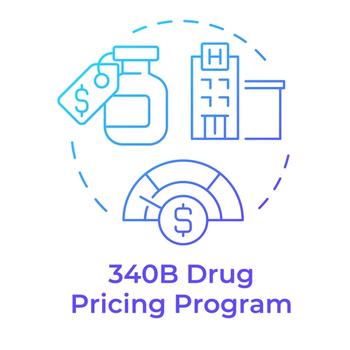
Cystic Fibrosis Medication Adds Significantly to Healthcare Costs
Blue Cross Blue Shield of North Carolina found that uptake of Trikafta was rapid after approval and total cost of care increased 52% despite reductions in hospitalizations and nonpharmacy costs.
Vertex Pharmaceuticals’ Trikafta was hailed as a breakthrough for cystic fibrosis when it was approved in October 2019. Trikafta (elexacaftor/ivacaftor/tezacaftor) is the first triple combination therapy that targets the defective cystic fibrosis transmembrane conductance regulator (CFTR) protein. It specifically targets F508del mutation, which affects 90% of the population with cystic fibrosis or roughly 27,000 people in the United States.
Cystic fibrosis, a rare, progressive, life-threatening disease, results in the formation of thick mucus that builds up in the lungs, digestive tract, and other parts of the body. It leads to severe respiratory and digestive problems as well as other complications such as infections and diabetes.
Two of the components of Trikafta, tezacaftor and elexacaftor, help to correct the folding of the protein product from this mutation. The third component, ivacaftor increases the flow of ions across the CFTR protein, which helps to alleviate the symptoms of CF. It was thought at the time Trikafta would lower the overall number of pulmonary exacerbations leading to hospitalizations, as well as decrease chronic healthcare resources such as inhaled antibiotics and nocturnal tube feeding, ultimately leading to lower costs overall.
But it is an expensive therapy. When it was launched, Trikafta cost $311,741 annually. A 2020
One health plan, Blue Cross Blue Shield of North Carolina, assessed the use and impact of Trikafta on the total cost of care. They found that the uptake was rapid and there was a significant per-member per-month pharmacy cost increase, and the total cost of care increased despite reductions in hospitalizations and nonpharmacy costs, according to a study
Investigators Spenser Smith, Pharm.D. and Molly Borchardt, Pharm.D., found that 12 months after FDA approval, 77 (68%) Blue Cross NC members with cystic fibrosis were using Trikafta. They found that total costs increased by about $5.8 million (52%) over a 10-month observation period.
Smith and Borchardt conducted a retrospective claims analysis that included 51 continuously enrolled members from the commercial population that began using Trikafta and measured its impact over a 10-month period on several variables. The study contains both medical and pharmacy claims.
The total cost of care increased significantly, both in terms of absolute total for the 51 included members and as a per-member average. This was observed despite reductions in both facilities and professional costs by 50% or greater during the same period.
Investigators noted that a limitation of the study was that it used retrospective claims data, which may be incomplete and may contain inherent biases. Additionally, there was a small sample size.
Newsletter
Get the latest industry news, event updates, and more from Managed healthcare Executive.






















































